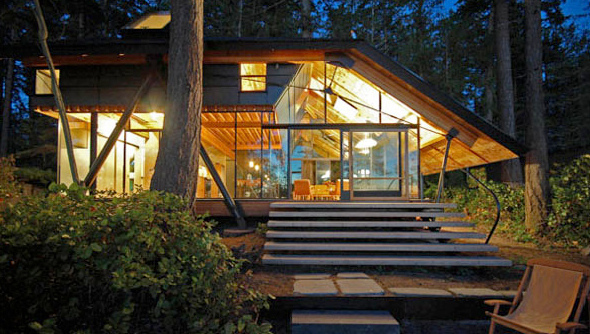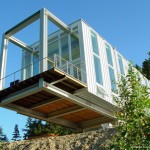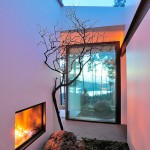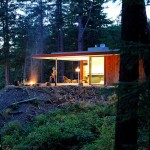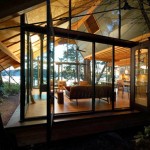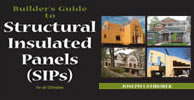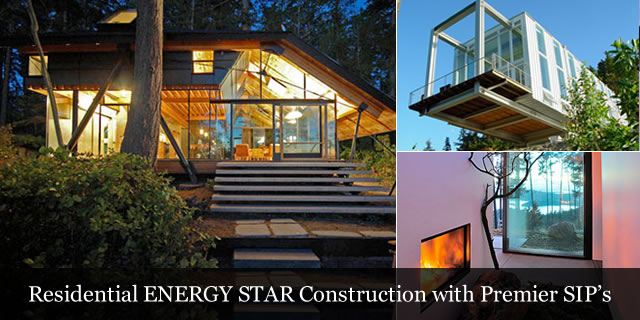
Imagine offering to build the entire building envelope (roofs, walls and floors) with a product that is one of the most environmentally-responsible, green building products in the industry today. Even if they are new to you, SIPs, along with their environmental benefits, have been around for more than 60 years. Discover the Premier SIPs Advantage and read on to get the whole “Green” story.
The basic design concept for SIPs is elegant in its simplicity, and offers several advantages for constructing walls and roofs. There is general agreement that SIPs provide better overall air tightness and practical thermal performance than conventionally framed walls.
– NAHB Research Center
We take environmental responsibility seriously; it’s a top-down approach about much more than just our products. See why PBS is a true “Green” company.

Homeowners save up to 60% on utility bills
Offering home and building owners up to 60% reduction on energy bills is just icing on the cake for builders and architects.
Made from renewable resources
SIPs are made from thick EPS foam cores sandwiched between OSB (Oriented Strand Board) panel faces. The OSB is made from fast-growing trees, and produced in a way that yields a large percentage of every tree. The foam itself is made from partially-recycled material, and the final result is a large solid panel that arrives to the jobsite pre-cut.
Exceptional indoor air quality and temperature control
When compared to buildings framed with dimensional lumber, Premier’s large SIPs cover greater surfaces with far less gaps in the walls and roofs, to be filled and sealed, offering home and building owners better indoor air quality, reduced infiltration of outside pollutants, smaller HVAC systems needs and superior indoor temperature control.
It’s this exact technology the lead the University of Colorado to the overall win in the 2002 Solar Decathlon. Premier homes and buildings stay cooler in the summer and warmer in the winter than buildings framed with dimensional lumber.
Up to two-thirds less jobsite waste than buildings framed with dimensional lumber
Job-ready SIPs allow installers to install the roof, wall and floor panels without the need to cut, frame and trim excessive amounts of lumber and other materials. The job-ready feature of Premier SIPs panels reduces the amount of jobsite material waste by 60% when compared to buildings constructed with regular dimensional lumber and framing materials. Less waste is obviously better for our environment.

SIPs and ENERGY STAR v3
The Environmental Protection Agency’s ENERGY STAR for New Homes program provides guidelines and verification methods for new homes that are at least 15 percent more energy efficient than the 2004 International Energy Conservation Code (IECC).
What Is The Energy Code: International Energy Conservation Code (IECC)• Energy Codes are the rules governing the types of construction process related to reducing energy use in a home.
Beginning on January 1, 2012, all new homes in the USA must follow the ENERGY STAR Version 3 guidelines that include higher insulation levels and an expanded thermal enclosure checklist. Building with structural insulated panels (SIPs) allows builders to meet these requirements faster and easier than with traditional wood framing by creating a well-insulated and airtight building enclosure in a single step.
Builders have the option of constructing a home to the prescriptive requirements of the ENERGY STAR Reference Design or demonstrating that their home meets the equivalent performance of the Reference Design through energy modeling. Both methods require inspection by a RESNET certified home energy rater.
Internationally Certified
At Premier builing systems,we have spent years testing and verifying the accuracy of our product data. In fact, our own Technical Center regularly tests our SIPs product properties. We’ve invested significant resources to produce credible tools, and the industry’s best code reports, so you can be confident that the products you’re using have the backing of an industry leader.



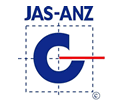



ANSI Code Report, ESR 1882 – View PDF | NTA Code Report, PRS032808-3 Listing Report – View PDF
Thermal Enclosure Checklist
All ENERGY STAR homes are subject to a visual inspection of the building enclosure following the Thermal Enclosure Checklist that examines common areas for thermal bypasses and air leakage. A complete SIP building envelope makes passing the inspection virtually automatic.
Insulation: All insulation must meet RESNET Grade I, meaning that cavity insulation must fill the entire cavity without any sizable gaps or compression. The exception is homes with insulated sheathing, where Grade II is permitted. SIPs deliver Grade I insulation every time, without relying on the work of subcontractors.
Fully-aligned air barriers: The checklist names a number of locations where a complete air barrier must be installed that is fully aligned with the insulation. This includes attic knee walls, skylight shaft walls, and installing wind baffles on attic eaves. With SIPs, the insulating foam core is fully encased in a code-compliant air barrier of oriented strand board (OSB), so no additional effort is needed to meet this requirement.
Air sealing: ENERGY STAR identifies several mandatory air sealing measures for wood framing, including sealing top and bottom plates, caulking sheetrock to top plates at attic-to-wall interfaces, sealing wiring penetration, and many others. SIPs require their own sealing measures per manufacturer’s specifications, but because they are manufactured in large sections (up to 8’ x 24’) there are fewer gaps to seal.
Reduced thermal bridging: Comprehensive air sealing, properly installed insulation, and high–performance windows work together to enhance comfort, improve durability, reduce maintenance costs, and lower monthly utility bills.
Builders using wood framing are required to implement a number of advanced framing methods to reduce thermal bridging. For conventional framing, the checklist requires insulated headers, insulation at corners, and reduced window and door framing. Alternately, builders can add insulated sheathing, use double wall construction, or build with SIPs.
Superior R-Values
The R-Values are similar to those of other products. R-value is a static measurement of the resistance to heat flow. Premier SIPs have consistently outperformed other methods of construction in both whole wall R-value comparison and energy efficiency. The most dramatic results are the reports of the happy customers of PBS, but there is also a significant level of scientific data as well. One of the best measures of energy efficiency of an entire wall assembly has been developed by Oak Ridge National Laboratory (ORNL). This testing method considers energy losses for the structural members, corners, joints and around windows, as well as, R- value of the insulation. For more information read our R-Values in the real world article.
Premier Modular LTD
Email: enquiries@premiersips.co.nz
Mobile: 021 233 3717
Address: 27c Hamilton Rd, Cambridge 3434For even more information on SIPs please visit our parent site www.premiersips.com

